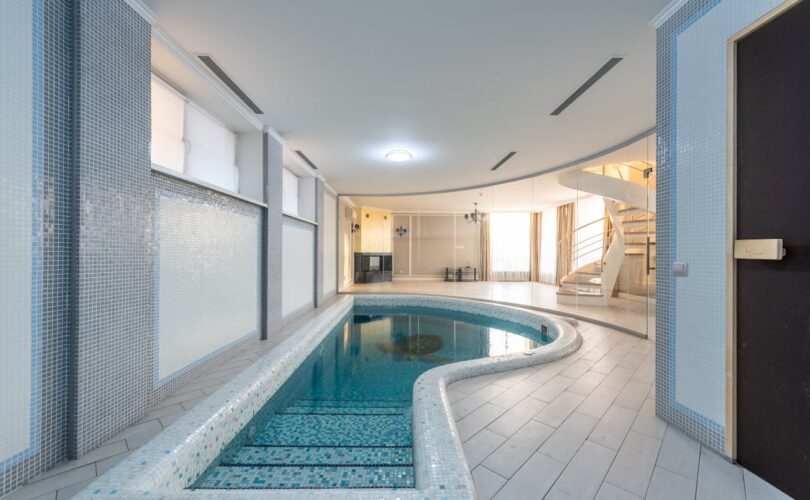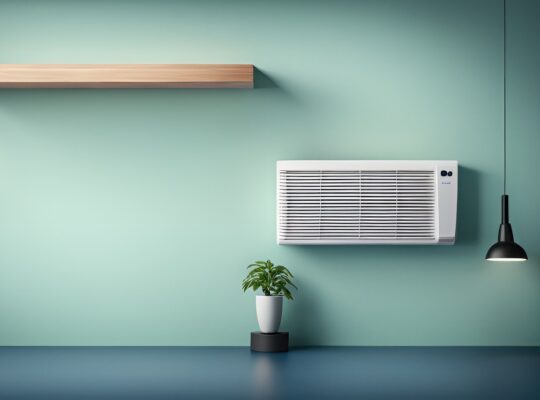In today’s fast-paced world, finding ways to unwind and rejuvenate has become essential for your overall well-being. Enter the spa experience – a sanctuary of relaxation that offers numerous benefits for your mind and body. Spa therapy has gained popularity as a holistic approach to wellness, providing a range of treatments designed to alleviate stress, boost your health, and promote a sense of balance in your life.
As you explore the world of spas, you’ll discover a variety of treatments that cater to your specific needs. From soothing massages to invigorating hydrotherapy, each spa treatment aims to enhance your physical and mental health. Spa visits can help you manage stress, improve your immune system, and even contribute to better sleep patterns. By incorporating regular spa sessions into your wellness routine, you’re taking a proactive step towards a healthier, more balanced lifestyle.
Types of Spa Therapies and Their Benefits
Spa therapy has gained popularity as a holistic approach to wellness, offering a range of treatments designed to enhance your physical and mental well-being. Let’s explore some of the most common types of spa therapies and their benefits.
Massage Therapy
Massage therapy is one of the oldest and most popular spa treatments. It involves manipulating soft tissues in your body to reduce stress, ease muscle tension, and promote relaxation. There are various types of massages, including Swedish massage, deep tissue massage, and sports massage. Each type has its unique benefits:
- Swedish massage: Uses soft, long, kneading strokes to relieve muscle tension and promote relaxation.
- Deep tissue massage: Focuses on deeper layers of muscles to alleviate chronic pain and stiffness.
- Sports massage: Helps athletes prevent injuries and improve flexibility.
Massage therapy has an influence on reducing joint pain, improving muscle tone, and enhancing joint flexibility. It also has an impact on boosting your immune function and alleviating symptoms of anxiety and depression.
Hydrotherapy
Hydrotherapy uses water in various forms to promote healing and relaxation. Some common types of hydrotherapy include:
- Aquatic physical therapy
- Warm-water baths and whirlpool spas
- Wet saunas
- Water circuit therapy
Hydrotherapy has benefits such as:
- Relieving joint pain by reducing gravity’s effects on your body
- Relaxing muscles through increased blood flow
- Strengthening muscles through water resistance
- Reducing stress and anxiety
Aromatherapy
Aromatherapy uses essential oils to enhance physical and mental well-being. Popular essential oils include lavender, eucalyptus, and citrus oils. Aromatherapy can be incorporated into massage sessions or used in diffusers.
Benefits of aromatherapy include:
- Reducing fatigue and increasing energy
- Alleviating nausea
- Improving sleep quality
- Decreasing stress and anxiety
Body Treatments
Body treatments are designed to exfoliate, cleanse, and moisturize your skin. Some popular body treatments include:
- Body scrubs: Exfoliate dead skin cells and enhance circulation
- Body wraps: Increase body temperature, boost circulation, and open pores
- Body masques: Cleanse the skin and reduce the appearance of pores
- Moisturizing treatments: Hydrate and nourish the skin
Benefits of body treatments:
- Improve skin texture and appearance
- Reduce cellulite and signs of aging
- Provide deep hydration, especially beneficial during winter months
- Promote relaxation and stress relief
By incorporating these spa therapies into your wellness routine, you can experience a wide range of physical and mental health benefits. From reducing stress and pain to improving skin health and overall well-being, spa treatments offer a holistic approach to self-care and rejuvenation.
Stress Management Through Spa Experiences
In today’s fast-paced world, finding effective ways to manage stress has become crucial for your overall well-being. Spa experiences offer a holistic approach to stress management, providing a sanctuary where you can unwind, recharge, and find inner peace. Let’s explore how spa therapies can help you combat stress and restore balance in your life.
Cortisol Reduction
Spa treatments have a significant impact on reducing cortisol, the primary stress hormone in your body. When you indulge in spa therapies, your body’s natural relaxation response is engaged, leading to a decrease in cortisol production. This reduction has an influence on lowering your blood pressure and slowing down your heart rate, creating a state of deep relaxation.
Massage therapy, in particular, has an impact on combating stress on a muscular level. It helps to:
- Relieve tension and pain in your muscles
- Increase the production of endorphins, your body’s natural mood elevators
- Foster a sense of peace and well-being
Relaxation Techniques
Spas offer a variety of relaxation techniques that can help you manage stress effectively:
- Aromatherapy: The use of essential oils can evoke positive emotions and reduce anxiety. Scents like lavender have been shown to increase brain activity and provide a calming sensation.
- Hydrotherapy: Soaking in a hot tub or mineral-rich bath can help relieve muscle tension, improve blood circulation, and promote detoxification.
- Mindfulness and meditation: Many spas now offer sessions to help you achieve a state of inner calm and clarity. These practices can reduce stress, improve focus, and enhance overall well-being.
- Yoga: Ending your spa day with a yoga class can help maintain the state of relaxation achieved through other treatments.
Mental Clarity
Spa experiences provide an opportunity to disconnect from daily stressors and achieve mental clarity. Here’s how:
- Mindful treatments: Facials and body treatments offer moments of mindfulness, allowing you to focus on the present and disconnect from external stressors.
- Reduced sensory input: Closing your eyes during treatments frees up brainpower, calming your mind and helping your muscles relax.
- Tech-free environment: Many spas encourage you to turn off mobile devices, ensuring you’re fully present and distraction-free during your experience.
Emotional Balance
Spa therapies can have a profound impact on your emotional well-being:
- Mood enhancement: The release of endorphins during spa treatments fosters a sense of happiness and contentment.
- Stress reduction: Regular spa visits can serve as a cornerstone of a holistic approach to stress management, leading to improved emotional balance.
- Sleep improvement: By promoting relaxation and reducing stress levels, spa therapies can help improve the quality of your sleep, which is crucial for emotional well-being.
- Self-care ritual: Incorporating spa visits into your wellness routine can provide a much-needed break from daily life, allowing you to focus on self-care and emotional rejuvenation.
By integrating spa experiences into your stress management strategy, you’re taking a proactive step towards achieving better mental, emotional, and physical health. The combination of targeted treatments, relaxation techniques, and a serene environment can help you build resilience against stress and maintain a more balanced, harmonious life.
Boosting Immunity and Overall Health
Spa experiences offer more than just relaxation; they have a significant impact on boosting your immunity and enhancing your overall health. By incorporating various spa therapies into your wellness routine, you can experience a range of benefits that contribute to a stronger, healthier you.
Improved Circulation
Spa treatments have a powerful influence on enhancing blood circulation throughout your body. Hydrotherapy, which uses water in various temperatures and pressures, has an impact on improving blood flow, easing muscle tension, and reducing inflammation. This improved circulation benefits your cardiovascular health and aids in healing injuries and wounds.
Massage techniques also play a crucial role in boosting circulation. They help enhance the flow of oxygen-rich blood while removing waste products and toxins from your cells. Different types of massages offer unique benefits:
- Deep tissue massage targets deep layers of muscles and connective tissue, promoting circulation and facilitating toxin elimination.
- Swedish massage incorporates long, flowing strokes and kneading techniques to improve circulation and lymphatic drainage.
- Hot stone massage uses heated stones on key body points to stimulate circulation and encourage the release of toxins trapped within tissues.
Toxin Elimination
Spa therapies are highly effective in supporting your body’s natural detoxification processes. Detoxification involves getting rid of unhealthy and toxic substances from your body, and spas specializing in this field offer various treatments to achieve this goal.
- Body wraps and scrubs help promote body detoxification, ease inflammation, and relax your muscles.
- Lymphatic drainage massage stimulates lymph flow, facilitating the removal of toxins and metabolic waste from your tissues.
- Sauna sessions and steam baths induce sweating, aiding in the removal of impurities and supporting your body’s natural detoxification processes.
Enhanced Sleep
Quality sleep is vital for your overall health and wellness. Spa therapies can complement sleep hygiene practices and contribute to better sleep quality. Massage therapy, in particular, has been shown to improve sleep in various groups of people, including those with chronic pain, insomnia, and even cancer patients.
Hot tub therapy can be especially beneficial for improving sleep. Soaking in warm water helps reduce cortisol levels in your system, promoting relaxation and easing anxiety. After getting out of the water, your body’s internal core temperature drops, signaling that it’s time to rest.
Increased Energy Levels
Regular spa visits can help restore your energy levels by clearing toxins that accumulate in fat cells and lead to fatigue. The combination of relaxation techniques, improved circulation, and toxin elimination contributes to an overall sense of vitality and well-being.
By incorporating spa experiences into your wellness routine, you’re taking a proactive step towards strengthening your immune system and promoting overall resilience. The holistic approach of spa therapies, combining physical treatments with mental relaxation, creates an environment where your body can heal, rejuvenate, and function optimally.
Incorporating Spa Visits into Your Wellness Routine
To maximize the benefits of spa treatments and enhance your overall wellness, it’s essential to integrate regular spa visits into your routine. By doing so, you can experience long-lasting benefits that contribute to your physical and mental well-being.
Frequency of Visits
The frequency of your spa visits depends on your individual needs and lifestyle. While many experts suggest monthly sessions for optimal benefits, it’s really down to your preferences and budget. If you have a high-stress lifestyle or a physically demanding job, you might want to consider more frequent sessions to manage stress effectively and maintain mental clarity. On the other hand, if you encounter little stress in your day-to-day life, you can treat spa therapy as an indulgent form of self-care and schedule visits as you see fit.
For those managing chronic pain or specific health conditions, you might need to adjust the frequency of your massages based on your current health status. Remember, consistent massages contribute more to long-term wellness than sporadic, intensive sessions. You’ll reap more benefits with a monthly massage for a year than getting two massages a week for just two months.
Choosing the Right Treatments
Selecting the appropriate spa treatments has an impact on enhancing your wellness journey. To make the best choice, consider the following:
- Identify your wellness goals (e.g., stress relief, pain management, skin rejuvenation)
- Assess your physical and emotional needs
- Take into account your medical history and potential allergies
- Consult with spa professionals for personalized recommendations
Each spa treatment offers unique benefits. Massages can ease muscle tension and promote relaxation, facials can improve skin health, and wellness therapies like aromatherapy can boost mental well-being.
Maximizing Benefits
To get the most out of your spa experiences, follow these tips:
- Prepare properly: Hydrate, avoid heavy meals, and arrive early to relax
- Communicate openly with your therapist about preferences and concerns
- Follow post-treatment guidelines provided by your spa professional
- Be patient and allow your body to adjust to the treatments
- Schedule follow-up sessions as recommended for optimal results
At-Home Spa Practices
Between spa visits, you can maintain the benefits by incorporating at-home spa practices into your routine:
- Create a relaxing environment with scented candles or essential oil diffusers
- Use high-quality skincare products for at-home facials
- Invest in a foot spa or massage tools for self-care sessions
- Practice relaxation techniques like meditation or deep breathing exercises
By combining regular spa visits with at-home practices, you can create a comprehensive wellness routine that supports your physical and mental health, helping you feel rejuvenated and balanced in your daily life.
Conclusion
Spa experiences offer a holistic approach to wellness, providing a range of benefits for both body and mind. From stress reduction and improved circulation to enhanced sleep quality and boosted immunity, regular spa visits have an impact on promoting overall health and well-being. By incorporating spa therapies into your wellness routine, you’re taking a proactive step to manage stress, rejuvenate your body, and maintain a balanced lifestyle.
To make the most of spa experiences, it’s crucial to choose treatments that align with your wellness goals and to maintain consistency in your visits. Combining professional spa sessions with at-home practices creates a comprehensive approach to self-care. This balanced routine has an influence on fostering long-term health benefits, allowing you to navigate life’s challenges with greater resilience and vitality. Remember, investing in your well-being through spa therapies is a powerful way to enhance your quality of life and nurture your physical and mental health.
FAQs
What are some reasons to visit a spa?
Visiting a spa offers numerous benefits that might surprise you. These include improving sleep quality, reducing stress and anxiety, alleviating arthritic and chronic pain, lowering blood sugar levels, decreasing blood pressure, enhancing skin health to appear younger and healthier, and reducing the frequency of migraines and tension headaches.
What does a wellness spa focus on?
A wellness spa is dedicated to promoting and enhancing overall well-being, relaxation, and self-care. These facilities provide a tranquil environment where individuals can focus on their mental and physical health.
What is the goal of a wellness spa?
Wellness spas and centers share a common objective: to improve a person’s well-being. They offer various services and experiences designed to relax the mind and body, which is particularly valuable in today’s fast-paced and stressful world.
What is the primary purpose of visiting a spa?
The primary purpose of a spa is to provide a retreat from daily stress, allowing for rejuvenation and relaxation through various treatments and massages. Spas offer a range of therapeutic techniques, including anti-cellulite treatments, facial and skin care, and general cleansing.





